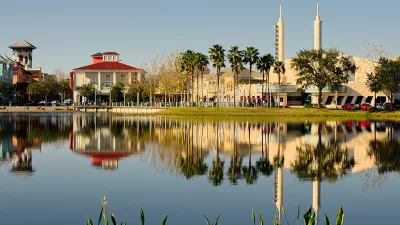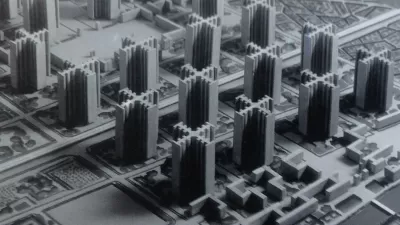Disney's efforts to make a quaint American town both failed and succeeded in ways few could have predicted.

Walt Disney's ambitions to build a perfect town were foiled in part by his death from lung cancer shortly after announcing his plan. Years later, Disney CEO, Michael Eisner, began work on what would become Celebration, Florida. "The town was developed by Disney as an antidote to the isolation of the suburbs," The Economist reports. It would be built with a sense of place at a human scale, "This community would have 20,000 residents, a central business district and futuristic public transport. Cars and lorries would be hidden away underground," continues the article..
Unfortunately, the town was unable to blossom into, "…a charming mid-Atlantic city, such as Savannah, Georgia or Charleston, South Carolina." The Economist cites a number of reasons for the town's relative level of success. In particular, the designers seem to have had different desires and interests than did the people the development attracted. The Economist notes that parks, which are no longer run by Disney, now are off limits to non-residents to the point where, "Sitting on a park bench is considered trespassing." A progressive public school designed specifically for the town did not last long there or win the hearts of the residents. "It proved a disaster. Kids slacked off. Without test scores, parents were unable to track their children’s progress." Still, with all its failings the town continues to attract homebuyers willing to pay a decided premium over the homes in the surrounding area. It seems that even with a downtown that never brought the business that the designers hoped for continues to draw residents.
FULL STORY: What Disney’s city of the future, built to look like the past, says about the present

Study: Maui’s Plan to Convert Vacation Rentals to Long-Term Housing Could Cause Nearly $1 Billion Economic Loss
The plan would reduce visitor accommodation by 25,% resulting in 1,900 jobs lost.

North Texas Transit Leaders Tout Benefits of TOD for Growing Region
At a summit focused on transit-oriented development, policymakers discussed how North Texas’ expanded light rail system can serve as a tool for economic growth.

Why Should We Subsidize Public Transportation?
Many public transit agencies face financial stress due to rising costs, declining fare revenue, and declining subsidies. Transit advocates must provide a strong business case for increasing public transit funding.

How to Make US Trains Faster
Changes to boarding platforms and a switch to electric trains could improve U.S. passenger rail service without the added cost of high-speed rail.

Columbia’s Revitalized ‘Loop’ Is a Hub for Local Entrepreneurs
A focus on small businesses is helping a commercial corridor in Columbia, Missouri thrive.

Invasive Insect Threatens Minnesota’s Ash Forests
The Emerald Ash Borer is a rapidly spreading invasive pest threatening Minnesota’s ash trees, and homeowners are encouraged to plant diverse replacement species, avoid moving ash firewood, and monitor for signs of infestation.
Urban Design for Planners 1: Software Tools
This six-course series explores essential urban design concepts using open source software and equips planners with the tools they need to participate fully in the urban design process.
Planning for Universal Design
Learn the tools for implementing Universal Design in planning regulations.
City of Santa Clarita
Ascent Environmental
Institute for Housing and Urban Development Studies (IHS)
City of Grandview
Harvard GSD Executive Education
Toledo-Lucas County Plan Commissions
Salt Lake City
NYU Wagner Graduate School of Public Service




























